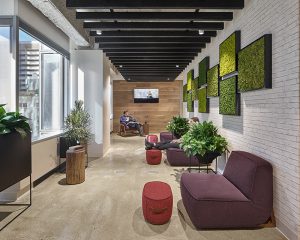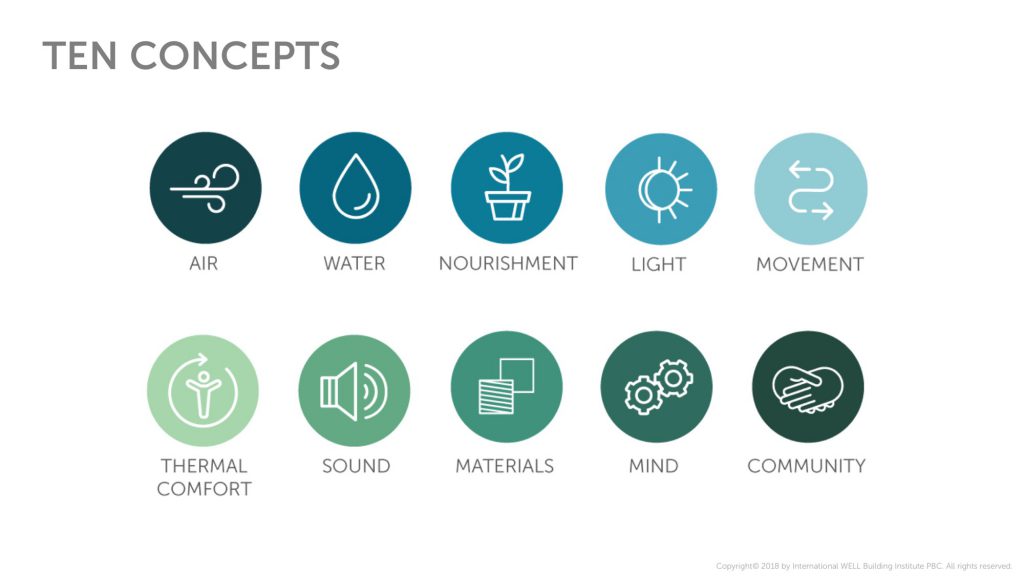It is jaw dropping to reflect on how much our world has changed in 27 days.
Everyone has their own story of THAT day. THE day when enormous, cultural mainstays like the NCAA Basketball tournament were officially deep sixed, launching a signature moment for all of us. It was exactly on THAT day when our own action plan went full throttle and our lives literally and immediately became virtualized with a flip of a zoom switch. Here at Meyer, we were uber-fortunate in that our dedicated and proactive internal operations task force stood tall in continuing to guide us thru every moment of THAT day to THIS day.
Fast forward to a current time that now has the ingredients of feeling, dare I say it….normal… or what now for all of us, the NEW normal. – Our design teams have all hit their stride, all working remotely and all doing their absolute best for our collective clients across all sectors.

By now, I’m sure you have all been sideswiped with an avalanche of COVID-related articles, webinars and panel discussions. All virtually formatted, and all for good reason, as we continue to find ourselves plunging head-first into an active volcano, gushing with an unprecedented, life-altering double-team of change and uncertainty. And while we are honestly trying to “figure-this-out-as-we-go”, it is encouraging to begin seeing hints of articles and discussions centered around the after part of a COVID world. – And lets face it, the “Whats it going to be like when we get through this” chats have provided just enough glimmer of optimism we could all use more of these days.
The other side of this is indeed every bit of a plodding blazing target, but even the most elusive of targets begin to eventually reveal the low tide of some form of clarity. And we are starting to see the beginnings of that clarity now in how we might conceivably handle the after moments. Perhaps the most significant of them will be the emergence of the WELL Building Standard.
Pre-COVID, (remember those days?) the WELL Building Standard had been gaining momentum, but sheepishly maintained its struggle to firmly wiggle itself into the daily lexicon of workplace and culture. The WELL Building Standard, similar to its older sibling LEED, had been checking the proverbial, “it’s nice to have, but not required” – box.
Fast forward to a global pandemic…
and the accelerate has been replaced with the afterglow of an invigorated International WELL Building Institute (IWBI). The IWBI is the governing body for the the WELL Building Standard, and now is leading the charge in literally providing the playbook to all things COVID-prevention and the workplace.
What makes the WELL Building Standard so prevalent in the post-COVID world is that the majority of practices and preventive measures of WELL are interwoven around similar preventive-type measures of COVID-related topics as presented by what is now the all too familiar CDC. They are aligned and have closed the gap between “pandemic prevention” and “workplace wellness”, essentially overlapping in similar words but with an overall unified mission – focusing on the well-being of the person.
The four pillars of the WELL Building Standard are:
- Prevention
- Preparedness
- Resilience
- Recovery
The WELL Building Standard (V2) concepts are further simplified by categorizing itself into 10 key principals reflected in the below chart. All good stuff and all with the goal of living and working in a healthy environment.

Going forward, each category will become crucially important elements of placemaking in the post-COVID workplace. These will become our new “buzzwords”, hearkening back to formal over utilized phrases like “collaboration” and “live-work-play” has in the recent past. In the end, the principles of WELL are quite simple as much as they are thorough, in that the standards have been developed and integrated with both science and medical expertise.
Recently, the IWBI has formed a global task force of the most innovative and respected Fortune 500 companies, international architectural and engineering firms, real estate service firms, manufacturing companies, school districts, federal agencies, cities, trade associations, research institutions and national non-profits.
That’s a slew of organizations, people and resources, all working toward the same goal in getting ahead of this and begin assessing ways in which WELL itself can further become the trailblazer for the post-COVID world.
I’m grateful to share that Meyer has been included in this task force and will look forward to providing updates as we proceed with next steps.
We spend 90% of our time in buildings. Where LEED measures the impact of a building on the environment, WELL is the first to measure the impact of a building on people with a focus on the health and wellness of the individual.
This is a beyond a good thing and the best part of this story is yet to come, unified and motivated on a global scale like ever before.
I relate how 9/11 literally changed the way we perceived path of egress and fire code, correctly refocusing our industry to that of the safety of the occupant. COVID-19 will change, in a similar way, how we view and value the health and well-being for the benefit of us all.
For additional references:
WELL Building